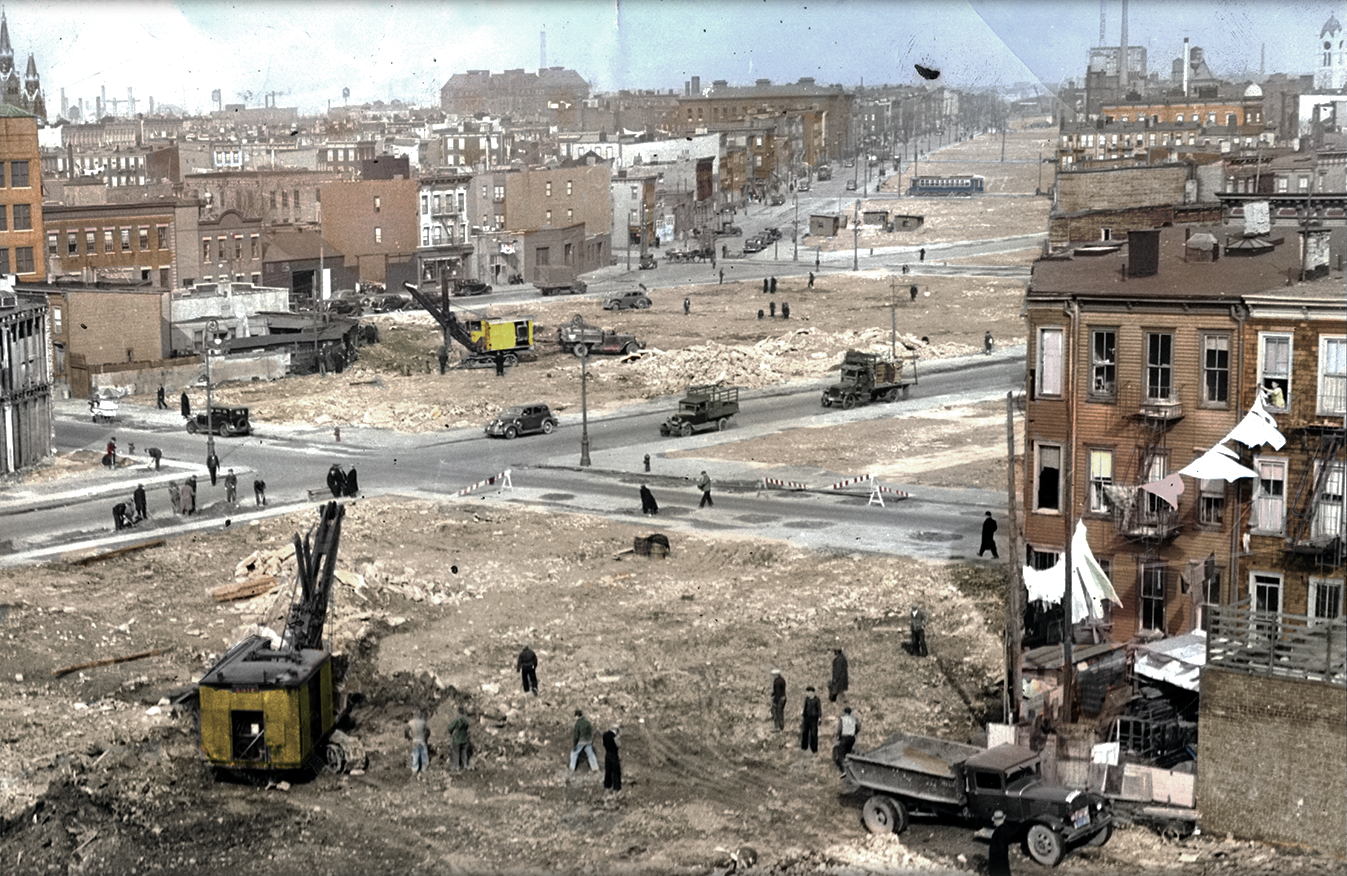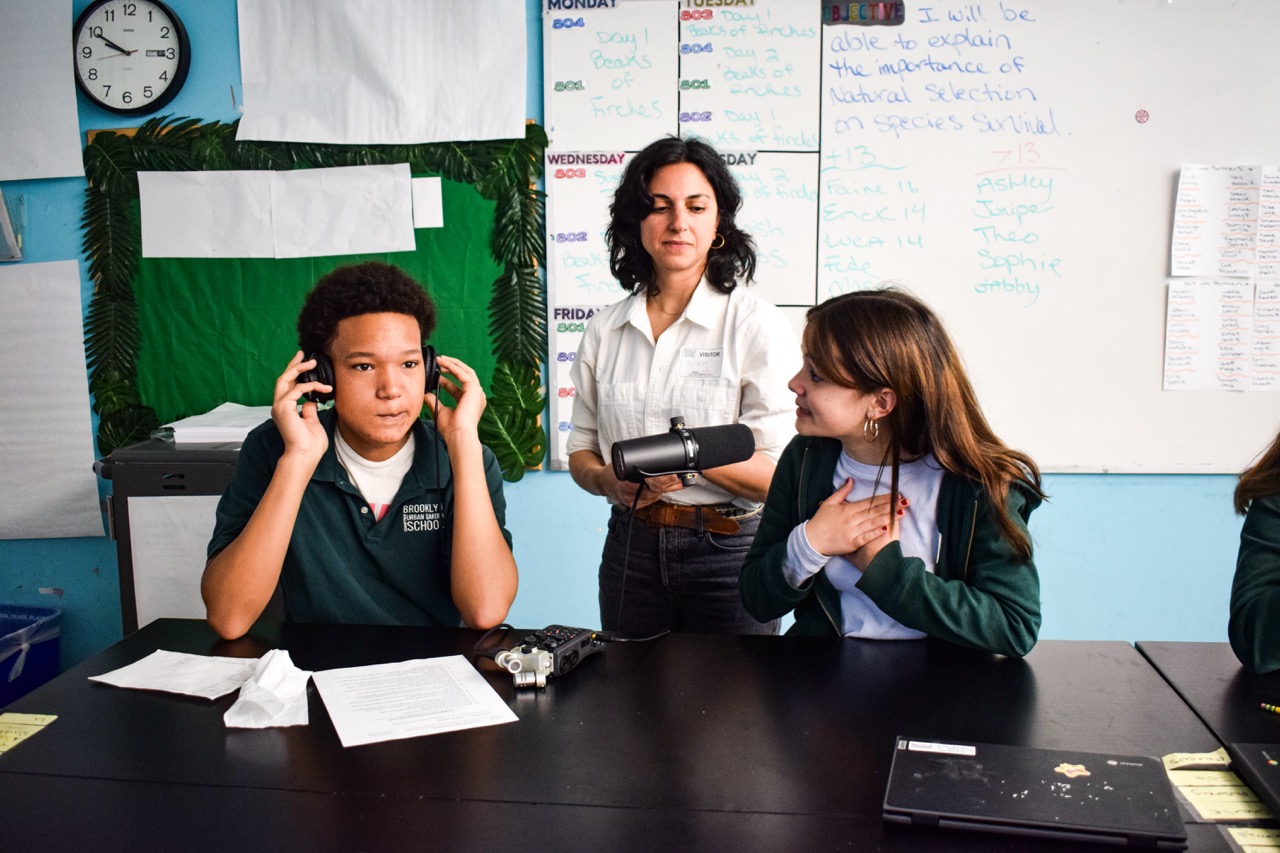
“If the future BQE, with freight moved to rail and water, were to become a tree-lined street rather than a six-lane highway that divides and pollutes neighborhoods, what would communities want to do with this newly available ‘land bank'?”
-Institute for Public Architecture (IPA)
The Institute for Public Architecture (IPA) has launched Modeling Community Visions for a Future Without the BQE, a project where Brooklyn & Queens residents will modify large scale physical models of the urban fabric along the Brooklyn-Queens Expressway (BQE) and share their visions for the future of their neighborhoods.
The divisive and polluting BQE, built by Robert Moses in the 1950s, is falling apart. With New York City’s recent funding appeal for repairs denied, local community groups have amplified their call for a holistic rethinking of the entire BQE corridor. To support that effort, IPA Fellows Marcus Wilford and Severn Clay-Youman will develop large-scale detailed physical models of neighborhoods adjacent to the BQE. The models, with a removable kit of parts including buildings, landscapes, and alternatives to the highway, will be modified by community members, with their proposals documented and shared with local leaders and elected officials. Workshops include presentations by architect Adam Paul Susaneck, Founder of Segregation by Design, featuring specific buildings, civic spaces, and social groups within each neighborhood that were destroyed by the construction of the highway. Several design workshops – free and open to the public – will be held at community venues this year.
Since 2020, IPA has been highlighting the institutional segregation and environmental impacts created by the highway and helping to raise awareness of the historical exclusion of underserved communities in decision-making about their physical space. Modeling Community Visions for a Future Without the BQE is the crucial next step in reimagining the BQE and giving voice to the community to decide what should take place in the threshold between vibrant existing neighborhoods and a re-imagined highway.
The project is supported by the National Endowment for the Arts; the New York State Council on the Arts with the support of the Office of the Governor and the New York State Legislature; by public funds from the New York City Department of Cultural Affairs in partnership with the City Council; New York Institute of Technology, School of Architecture & Design; and private donations.
︎︎︎ BQE2053
-Institute for Public Architecture (IPA)
The Institute for Public Architecture (IPA) has launched Modeling Community Visions for a Future Without the BQE, a project where Brooklyn & Queens residents will modify large scale physical models of the urban fabric along the Brooklyn-Queens Expressway (BQE) and share their visions for the future of their neighborhoods.
The divisive and polluting BQE, built by Robert Moses in the 1950s, is falling apart. With New York City’s recent funding appeal for repairs denied, local community groups have amplified their call for a holistic rethinking of the entire BQE corridor. To support that effort, IPA Fellows Marcus Wilford and Severn Clay-Youman will develop large-scale detailed physical models of neighborhoods adjacent to the BQE. The models, with a removable kit of parts including buildings, landscapes, and alternatives to the highway, will be modified by community members, with their proposals documented and shared with local leaders and elected officials. Workshops include presentations by architect Adam Paul Susaneck, Founder of Segregation by Design, featuring specific buildings, civic spaces, and social groups within each neighborhood that were destroyed by the construction of the highway. Several design workshops – free and open to the public – will be held at community venues this year.
Since 2020, IPA has been highlighting the institutional segregation and environmental impacts created by the highway and helping to raise awareness of the historical exclusion of underserved communities in decision-making about their physical space. Modeling Community Visions for a Future Without the BQE is the crucial next step in reimagining the BQE and giving voice to the community to decide what should take place in the threshold between vibrant existing neighborhoods and a re-imagined highway.
The project is supported by the National Endowment for the Arts; the New York State Council on the Arts with the support of the Office of the Governor and the New York State Legislature; by public funds from the New York City Department of Cultural Affairs in partnership with the City Council; New York Institute of Technology, School of Architecture & Design; and private donations.
︎︎︎ BQE2053



